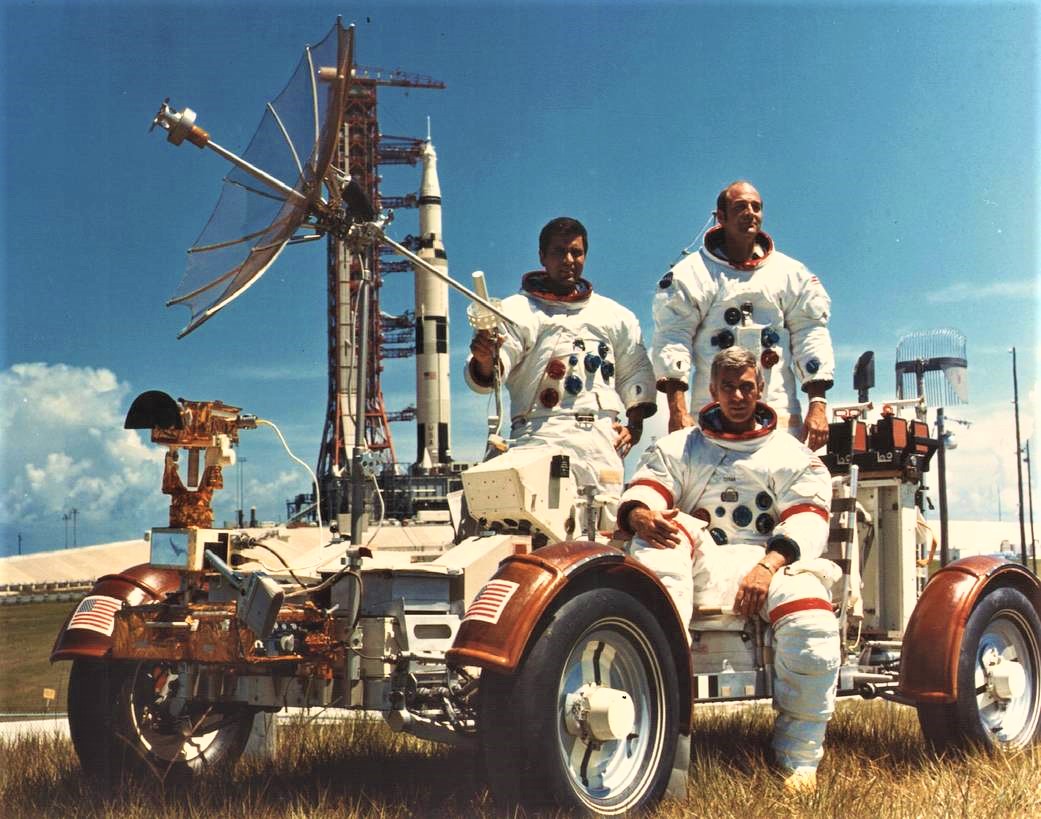By Christian Nielsen
It seems incredible that half a century has passed since the last human moon landing. Because it is exactly 50 years ago today that astronauts Eugene Cernan, Ronald Evans and Harrison Schmitt landed on the Moon to complete the last of their kind missions.
Only the astronauts Cernan and Smitt left the command module, who made contact with the lunar surface in the Taurus-Littrow, a rocky valley located on the visible side of the satellite. The travelers had their own mobile, the Lunar Roving Vehicle or roving lunar vehicle with which they made scheduled tours for three days.
For being the last mission of its kind to date, Apollo 17 broke a series of records in a discipline that has very limited competitors. It was the longest moon landing, comprised the most extensive total extravehicular activity, collected and returned the largest lunar sample (100 kilograms), and rounded out the longest manned lunar orbit stay in history.
PEOPLE AS ONE
Apollo 17 was also the first lunar mission to include astronauts who had not previously been test pilots. This opened up the possibility that future flights into space would have civilian astronauts with no prior experience flying aircraft or spacecraft.
The last trip to the Moon was carried out by two military pilots and a geologist. Astronauts Cernan and Evans had military academic training and were both electrical engineers, aeronautical engineers, and fighter pilots. Instead Smitt, a native of Santa Rita, New Mexico, had received a bachelor’s degree in science from the California Institute of Technology and then studied geology at the University of Oslo, Norway. His doctorate in his discipline was obtained from Harvard University.
This academic training marked the path of Smitt who in 1965 joined NASA, which was already working on the first guidelines of the program aimed at taking the first man to the Moon, a goal that would be reached in July 1969.
“THE BLUE MARBLE”
Being, until 1970, the only highly specialized geologist at NASA, Smitt was considered for the missions that followed Apollo 11. His work focused on training crews in remote sensing terrain observation methods ( while in lunar orbit) and geological prospecting techniques while on the surface.
Finally, it was Smitt’s turn when the flight director decided to include him in the crew that would be launched in December 1972.
In addition to being a geologist and professor, Smitt was an excellent photographer. He had on board, on the day of departure, a Hasselblad camera with an 80-millimeter Zeiss lens, with which he was able to take one of the most emblematic photographs of Earth and the first in which the planet is observed fully illuminated.
So impressive was its appearance on the space flight scene that NASA dubbed it “The Blue Marble”, almost a miracle of photographic technique. In later missions and with the advent of digital photography, it was possible to build a total image of the Earth by superimposing different shots. But none of them reached the degree of artistic perfection achieved by this unique photograph, from the analog era with chemicals and celluloid.
Various natural factors concurred for the achievement of this historic take. For one thing, at the time of the Apollo 17 launch, Africa was fully illuminated. Also, with the December solstice approaching, the pristine white of Antarctica shone brilliantly. As an additional detail, the Tamil Nadu cyclone of 1972 was beginning to coil over eastern India presenting its multicolored whirlwind of clouds.
WE WILL BE BACK
That photograph, apart from going around the world and becoming an icon of the Earth seen from outer space, was a factor in disturbance among the crew of the last lunar landing. The shot was attributed to the crew of Apollo 17 while Smitt, author of the historic click, claimed all the credit.
But the scuffle did not go far. It corresponded to the legendary flight director of the Apollo program Gene Kranz -masterfully made into a film by Ed Harris-, to seal the peace with that of “we are a team, we live and work as a team”.
It happened half a century ago. Now you hear talk of “returning to the moon.”
But it is another time and other men.
A new adventure.


















